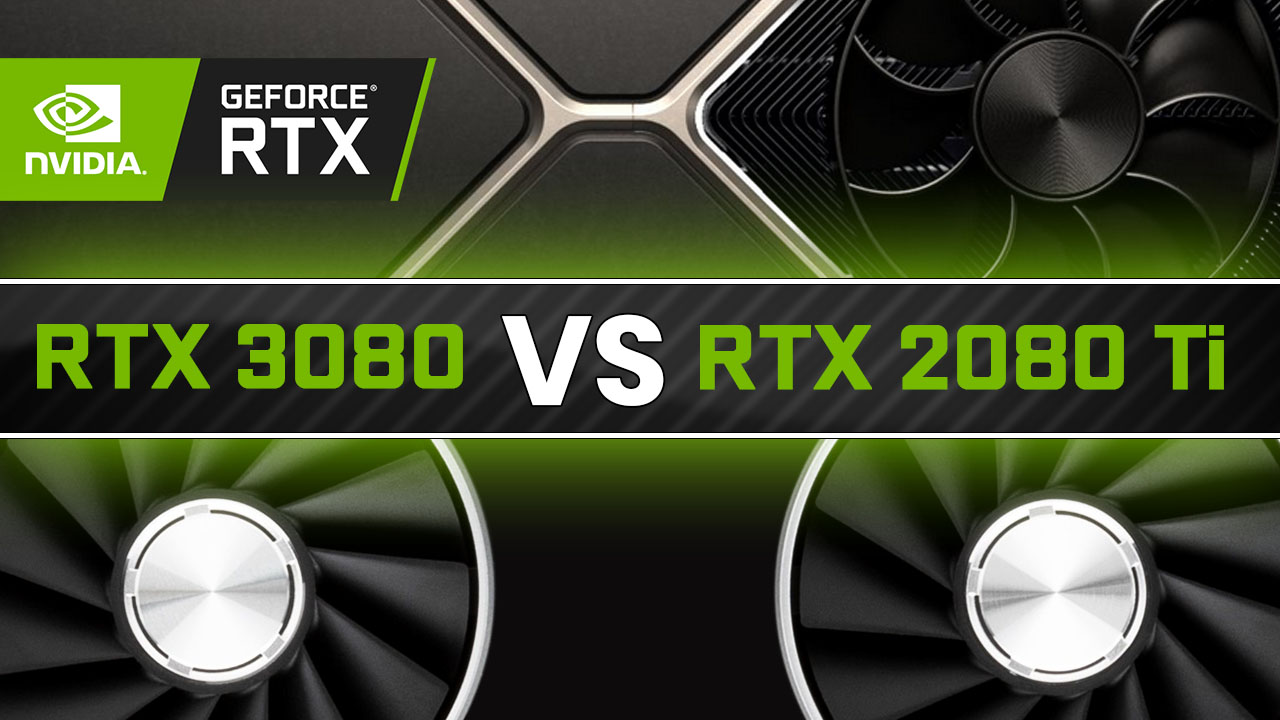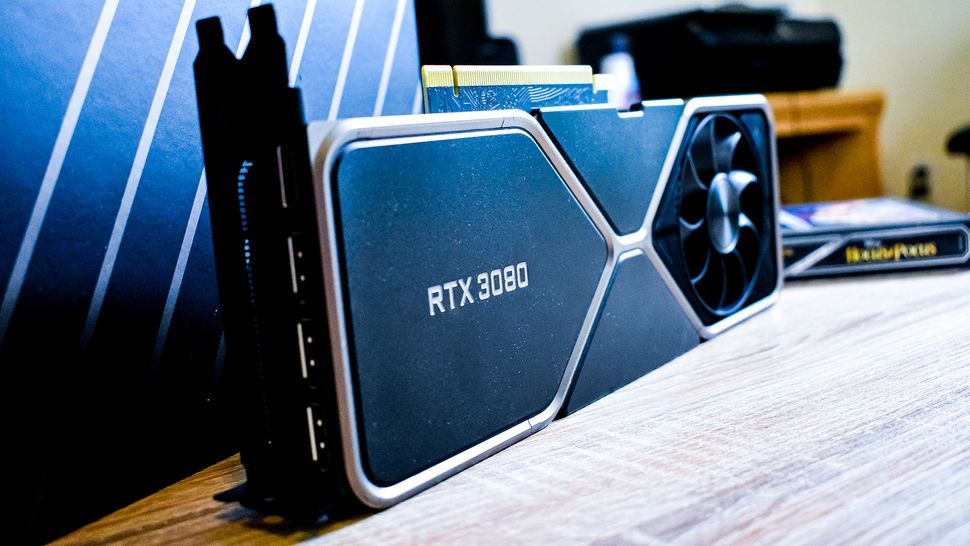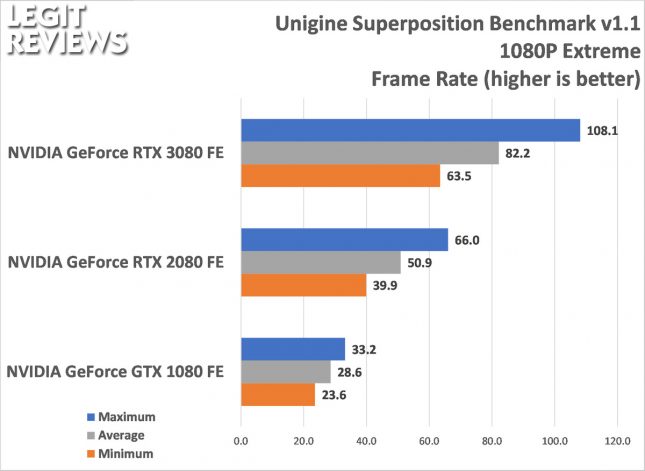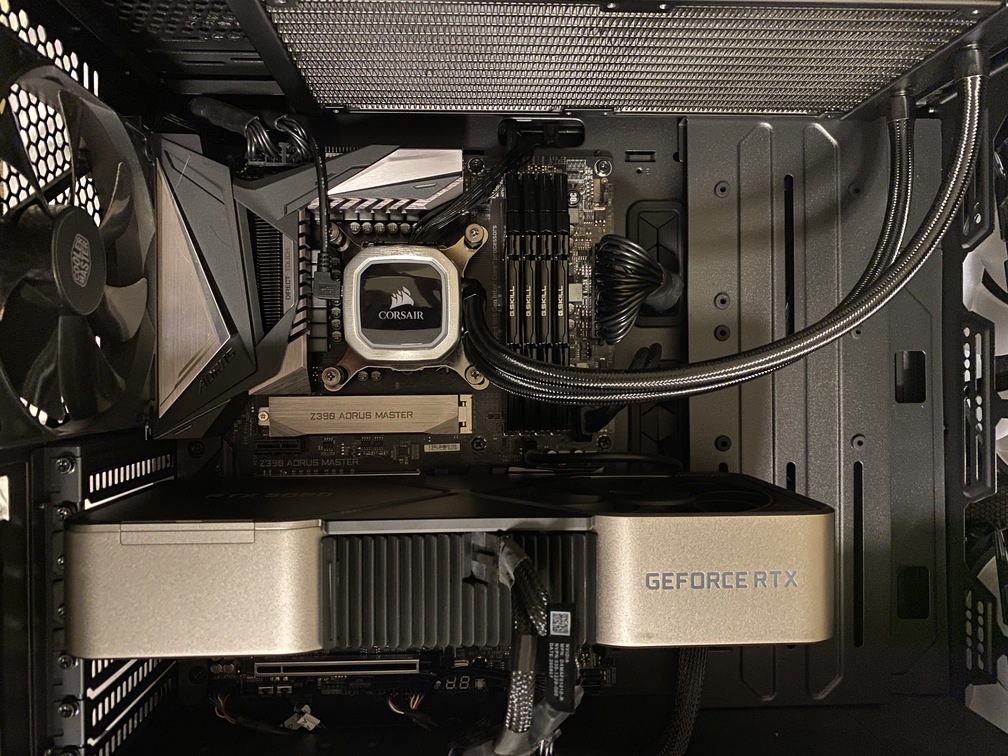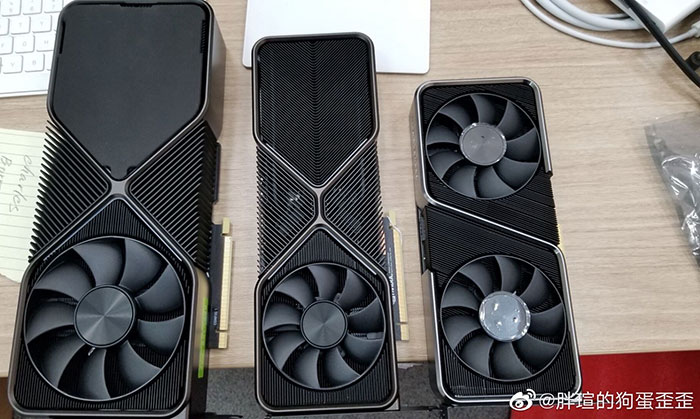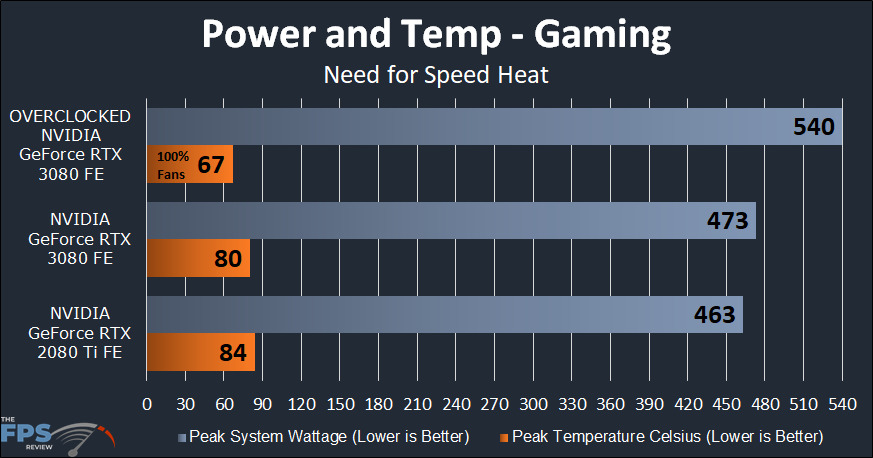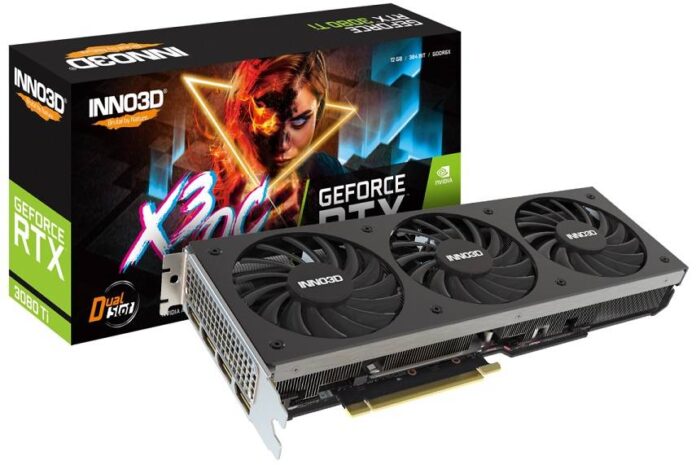According to the report from Wccftech, the sales should begin a day later. Ever since there were problems with GPU availability, manufacturers have tried to split the review and sales embargoes. This allows customers to read a review first before they decide to preorder a graphics card. Unfortunately, we occasionally see both embargoes lifting at the same time, which is not a very consumer-friendly approach.
The last launch from NVIDIA featuring RTX 3060 graphics card has given customers 3 hours to read the reviews before the cards went on sale. This increased power saw the peak operating temperature rise by 2C to 77C and the fan speed by 200 RPM to 2100 RPM, so as far as user experience is concerned, they're about the same. Under these conditions the FE model averaged a core clock speed of 1770 MHz, which is well above the advertised GPU boost clock, but that's how Nvidia's GPU boost works. It's an impressive result for a dual-slot graphics card, so bear that in mind as we take a look at the much larger AIB models. In addition to its flagship GeForce RTX 3080 Ti graphics card, NVIDIA is allegedly planning to launch at least three GeForce RTX 30 series graphics cards in January 2021, reports Videocardz. The lineup will consist of the GeForce RTX 3080 Ti, RTX 3060, RTX 3050 Ti, and the RTX 3050.
In addition to all of these cards, NVIDIA will also introduce its GeForce RTX 3060 TI a month earlier in December as it's rival also ready mid-range cards based on the RDNA 2 graphics architecture. Like I opined in my original review, most gamers would absolutely be better served picking up an RTX 3080 as soon as they can find one at MSRP. Yet, if you have your heart set on a 3080 Ti, there is no mistaking that this is an excellent choice that is clearly ready to be pushed further with a custom overclock. It's just a shame that pricing is so high because while this card may just be the best "gaming" card on the market right now, it's so cost-prohibitive that it's hard to recommend to anyone other than high-level enthusiasts. That said, price to performance value has always gone out the window when it comes to the upper echelons of graphics cards, so those looking for the best of the best typically are prepared to pay for it.
Near the three-pin power connector, MSI has added a BIOS selector switch that lets you choose between Gaming and Silent modes. Both have the same clock speed, but Gaming Mode allows the fans to ramp a little higher to keep the card cool. In this mode, the card peaked at 68C after repeat runs of Unigine Heaven and hovered closer to 65C when playing actual games. This was also in a hot 26C office, so I would expect the card to run cooler in an air conditioned setting. In Silent Mode, this ramped to 72C but I honestly didn't find it necessary. The cooling system is performant enough that it never needed to ramp the fans up obnoxiously high and was on par, if not a bit better, than the RTX 3080 Ti Founders Edition in acoustic performance.
When Nvidia released its RTX 3090, there was no question that it was the most powerful graphics card on the market. But, as time went on, it became clear that while it could deliver excellent frame rates, gaming was really a side-line to its prosumer and creation design leanings. So, it was only a matter of time before Nvidia unveiled its RTX 3080 Ti, a new card to become king of the PC gaming hill. I've spent the last week putting this exciting new GPU through its paces to see if it delivers on its promise of being the "new gaming flagship" PC gamers have been waiting for. Coming in at $1,199, it's an expensive card, so let's take a closer look and see how it stacks up. Those who have seen any Founders card in passing over the years first saw NVIDIAs take on a newly designed blower-style cooler used on the original RTX Titan, which wasn't special but worked well enough.
That ended up being an issue once bigger GPUs came around requiring a higher power draw, thus needing a better cooling solution. This newest cooler design also uses two fans, however, a fundamental change occurred. Now one is set to push air out the I/O bracket and the other upwards into the case itself. This design relies on a case with high airflow, especially for the rear fan exhaust. While the sides do have a set of fins, these are more passive due to the frame blocking the most direct airflow from the fans. Godfall is a large-scale open-world action RPG, full of reflective surfaces and advanced light effects.
Unlike Control, it's optimised to run ray tracing on AMD, rather than Nvidia graphics cards, which is the reason it doesn't support DLSS at the moment. Here, the 3080 Ti once again proved capable of running the game at playable frame rates across every resolution. Instead of a marginally higher price than the RTX 3080, the MSRP is 70% higher and the RTX 3080 Ti is only about 10–12% faster on average.
Plus, as we mentioned above, the Founders Edition cooler can't keep up with the additional GPU cores and GDDR6X memory. Developers can now add even more amazing graphics effects to Microsoft Windows-based PC games. GeForce RTX graphics cards deliver advanced DX12 features like ray tracing and variable rate shading, bringing games to life with ultra-realistic visual effects and faster frame rates. This had the graphics card fans spinning at up to 1900 RPM where they could be heard but we're not overly loud. We don't have any sound measurements right now, but we found the FE model to perform well and given the performance and power draw we were pleasantly surprised. We'll say the card does tend to squeal a lot when pumping out over 300 fps, so if you are sensitive to coil whine, a frame cap will be in order.
Out of the box this model peaked at 49C with a fan speed of just 1500 RPM, which allowed for an average clock speed of 1920 MHz, or a 5% increase over the TUF Gaming, while running 15C cooler and quieter. Of course, this premium model will be much more expensive, but that's just par for the course when discussing liquid-cooled graphics cards. Brad Chacos/IDGAMD's rival Radeon RX 6900 XT, on the other hand, packs in more raw capacity—16GB—but of the slower GDDR6 variety across a smaller 256-bit bus, so it only has an effectively memory bandwidth of 512GBps. Nvidia's cards lack a similar feature and rely on the raw power of GDDR6X over a wider bus.
In practice, however, all of these high-end GeForce and Radeon cards deliver plenty of bandwidth and performance for 4K gaming. The most important thing to look at is the CUDA core count, as that's a key indicator of performance for Nvidia's graphics cards. With a whopping 10,240 cores, the GeForce RTX 3080 Ti isn't much of a cut-down GPU—the RTX 3090 has 10,496. Our benchmarks will show it leaving the vanilla 3080 in the dust and landing right next to the 3090 in raw gaming performance.
The Nvidia RTX 3080 Ti is one of the most powerful graphics cards I've tested in quite some time, offering stellar 4K performance across the board, even with ray tracing graphics settings on. But its price makes it a very expensive luxury, with better value found elsewhere. Nvidia's new RTX 3080 Ti graphics card is now theoretically available, now that we've reached the 2PM UK time , 3rd June 2021 release date. Obviously, we're all aware of the state of the graphics card market right now, so all we can do is suggest places that might have stock if you happen to check them at the right time. Anyway, our RTX 3080 Ti review shows that this card is neck-and-neck with the more expensive RTX 3090, making it a far better option for most people - although the original RTX 3080 continues to offer much better value overall. In this article, we'll share the best places in the US and UK to pick up your new RTX 3080 Ti.
Meanwhile, Doom Eternal shows how raw shader power can translate into super fast frame rates in a well-optimised game that scales accordingly. Again, though, the Radeon RX 6900 XT was a little faster at this resolution, and not far behind the 3080 Ti at 4K. Anthony joined the TweakTown team in 2010 and has since reviewed 100s of graphics cards. Anthony is a long time PC enthusiast with a passion of hate for games built around consoles. FPS gaming since the pre-Quake days, where you were insulted if you used a mouse to aim, he has been addicted to gaming and hardware ever since. Working in IT retail for 10 years gave him great experience with custom-built PCs.
AMD now has more VRAM across its range of Radeon RX 6800 series graphics cards than NVIDIA does on the "$1199" GPU that is more expensive than the rest of AMD's Big Navi range. Due to a worldwide silicon shortage, anyone that's been trying to get their hands on one of the best graphics cards has had to struggle with store lotteries, scalpers, and just plain limited supply. And, that's kind of the lens we have to look at this graphics card in, especially because Nvidia's high $1,199 starting price for the RTX 3080 Ti is probably going to be extremely rare for quite a while. I haven't included any 1080p results here because, let's be honest, you shouldn't be buying either of these cards for 1080p gaming. With all that in mind, then, let's take a look at some lovely bar charts.
Here's a look at how the cards performed in Shadow of the Tomb Raider at 1440p, both stock and overclocked. We were only able to squeeze 4% more out of the Founders Edition card, hitting 1885 MHz with the memory at 21 Gbps. The TUF Gaming was 1% faster out of the box and I was able to squeeze a further 3% from it, hitting 178 fps on average with a core frequency of 1900 MHz. Theory, well, you like to take with you, but now it's straight and no frills to the nitty gritty. The case of the card is a pretty clever mix of light metal, plastic and hardware, which feels great and valuable and also looks good.
The design with the 3.8 cm installation depth and the 4 mm backplate makes this card a true dual-slot design with all known advantages and disadvantages. Love it or hate it, it's not a deterrent in the form of this graphics card, despite the power consumption it has to deal with. The new GeForce RTX 3080 Ti is said to fall between the GeForce RTX 3080 and the RTX 3090. But whether it will fall exactly in the middle or whether the pendulum will move more in the direction of the smaller or larger card remains to be seen today. But people are still looking for revenge because of AMD's Radeon RX 6900XT, which often came quite close to the RTX 3090.
After months of endless leaks and rumors—many inaccurate—Nvidia's $1,200 GeForce RTX 3080 Ti is finally here, and it's an absolute monster. GeForce's new "gaming flagship," as Nvidia calls it, blazes through games almost as quickly as the ferocious GeForce RTX 3090. The I/O section has gone under a radical change from previous generations due to the heatsink design. The push for 4K content has been growing for a long period now and has reached mass adoption.
It is no surprise the push for 8K content is next as TV manufactures are eager to sell you more things. While the push for higher imagine fidelity is welcomed, I think it will be a long time before graphics cards can properly support that resolution. One of my main concerns previously was that the heat generated by the graphics card directly passing over the system memory would be cause for concern.
This cooler is designed to exhaust a large amount of heat and it is up to the end-user to have a good amount of airflow in the case. The hot air is pushed right up in the hopes the case exhaust fans will wisp it away quicker than if it was allowed to passively exit the case. This cooler design allows for a smaller footprint at the possible expense of other computer components. For those who missed the Ampere product launch last summer, here is a recap of what has changed in terms of generation improvements. With this Ampere generation a lot of minor architectural improvements have been made over the Turing GPUs. Packing a whopping CUDA Cores compared to NVIDIA Turing flagship 2080 Ti, which had 4352 and was very impressive to see on a single die for its time.
A large portion of the Streaming Multiprocessors , RT, and Tensor cores have been reworked to maximize the improvements in this Ampere GPU generation. With a massive 28.3 billion transistors , all these combined make for some major uplifts in the performance that fundamentally changes how game developers can utilize these optimizations fully in future AAA games. Being touted as 1.5x the performance of the 2080 Ti in traditional rasterization and 1.9x increase per watt over the Turing series in ray-tracing applications. Here you can see the RTX 3080 Ti performed admirably, playing the game at playable frame rates with the graphics maxed and ray tracing and DLSS turned on.
The only time it dropped below 60fps, which is considered the optimal point to comfortably play games, was when playing Control in 4K with ray tracing on and DLSS off. However, I'd still recommend most gamers, who don't have expensive 4K gaming monitors or TVs with HDMI 2.1, to invest in a cheaper GPU such as the RTX 3070, RTX 3060 Ti or AMD RX 6700 XT. These offer more than enough power for 1080p or 1440p gaming and retail for a fraction of the price. And if none of these sound like the right fit, then you can see a curated pick of the best graphics cards we've tested in this handy guide. The Nvidia RTX 3080 Ti is a powerhouse graphics card that delivers an excellent 4K ray tracing performance. If you can afford its steep up-front cost then it's an excellent choice for any hardcore gamer looking for top-of-the-line performance.
However, the gains you get compared to the base RTX 3080, which costs a lot less, make it a hard sell for gamers who don't need the best performance possible in 4K. The GeForce RTX™ 3080 Ti graphics card delivers the ultra performance that gamers crave, powered by Ampere—NVIDIA's 2nd gen RTX architecture. It's built with enhanced RT Cores and Tensor Cores, new streaming multiprocessors, and superfast G6X memory for an amazing gaming experience. After all, the RTX 3090 is actually meant not just for gaming, but also for the content creators who need that amount of VRAM for their rendering work. The 12GB of GDDR6X memory was overclocked by 1000MHz+ up to just over 21Gbps, resulting in just over 1TB/sec of memory bandwidth. We should expect this to be some of the best results for GPU boost and overclocking, but I do have some custom GeForce RTX 3080 Ti graphics card reviews coming right after this with varying OC results.
The Nvidia GeForce RTX 3080 Ti itself is using a trimmed-down version of the same GPU that powers the RTX 3090, and is paired with half the VRAM of that ultra-premium graphics card. That means despite the market the RTX 3080 Ti is launching in, it's an incredibly powerful graphics card, and should have no problem powering any game under the sun at 4K 60 fps. But, the proximity to the RTX 3080 in performance, and the distance in price means that this graphics card might be a hard sell once the market returns to normal.
The Nvidia GeForce RTX 3080 Ti is an absolute monster of a graphics card, delivering RTX 3090-level gaming performance at a lower price. However, the high starting price may still be a turn off for budget-conscious folks that just want to get some PC gaming in. There's potential for far more promising third party cards, but then we still have the price conundrum.
This card was probably originally slated to be a $999 competitor to the RX 6900 XT, but in the current market, Nvidia has bumped the price to reap some of the profits that the AIBs and suppliers have been enjoying. Since everything we'd like to recommend ends up costing twice as much as it "should," and much of the price gouging doesn't end up going to Nvidia , this is what we get. If you thought the RTX 3090 was too expensive when it launched at $1,500, be prepared for slightly lower performance, half the VRAM, and higher street prices on the RTX 3080 Ti. Well, higher than the 3090 launch price, at least, since the RTX 3090 now basically sells at Titan RTX and Titan V levels these days. It was priced $150 above the GTX 1080 at launch and actually inherited the GTX 1080 Founders Edition launch price, all while delivering about 30% better performance. Even today, gamers with GTX 1080 Ti cards can still run every game out there — just not at maxed-out settings.
That's a pretty high bar to clear, and frankly, the RTX 3080 Ti doesn't come close. Looking at generational improvements, the RTX 3080 Ti is potentially more than double the compute performance of the 2080 Ti, with nearly 50% more memory bandwidth. In practice, we expect performance will be about 40–50% faster than the 2080 Ti, but that will mostly be at 4K and 1440p. Buying a GPU like this for 1080p gaming (unless you're playing games with lots of ray tracing effects) would be a waste of money.
NVIDIA today refreshed the top-end of the GeForce RTX 30-series "Ampere" family of graphics cards with the new GeForce RTX 3080 Ti, which we're testing for you today. The RTX 3080 Ti is being considered the next flagship gaming product, picking up the mantle from the RTX 3080. While the RTX 3090 is positioned higher in the stack, NVIDIA has been treating it as a TITAN-like halo product for not just gaming, but also quasi-professional use cases.
The RTX 3080 Ti has the same mandate as the RTX 3080—to offer leadership gaming performance with real-time raytracing at 4K UHD resolution. The GeForce RTX™ 3080 Ti and RTX 3080 graphics cards deliver the ultra performance that gamers crave, powered by Ampere—NVIDIA's 2nd gen RTX architecture. They are built with enhanced RT Cores and Tensor Cores, new streaming multiprocessors, and superfast G6X memory for an amazing gaming experience. The gaming crowd, then, looked to the rest of the RTX and GTX lineup for cards that catered to them; think entries like the GeForce RTX 2080 Ti, GTX 1660, or RTX 3080.
Until the launch of today's RTX 3080 Ti, any Nvidia Founders Edition graphics card that called itself "for gamers" was priced under $999 at launch, a ceiling set by the RTX 2080 Ti in September of 2018. Indeed, you'll likely find many are just as expensive as the RTX 3080 Ti's starting price of £1049 / $1199, which is frankly just crazy money if you ask me. As such, I'd strongly recommend not buying a new GPU if you can help it just now, as you'll likely end up paying massively through the roof for it. Alas, the graphics card shortage isn't likely to resolve itself until next year, so sometimes needs must. I'd still recommend opting for the RTX 3080 if you can find it, but when both cards are roughly of a similar price right now, you may decide it's worth getting the Ti instead.
With the launch of Nvidia's GeForce RTX 3080 Ti this month, the vanilla version of the RTX 3080 is no longer Nvidia's flagship gaming GPU. Traditionally, Nvidia's Ti models have offered substantially more performance than their non-Ti siblings, as we saw last generation with the RTX 2080 and 2080 Ti, and the generation before that with the GTX 1080 and 1080 Ti. Is the RTX 3080 Ti really the best graphics card for 4K gaming, or does the vanilla RTX 3080 still manage to hold its own against its more expensive Ti sibling?
Starting with the RTX 3080 Ti and 3090, they have nearly the same number of CUDA cores, Tensor cores, and ray tracing cores. Clock speed, memory speed, and memory bandwidth are nearly identical, too. When using DLSS, the 2080 Ti sees an 18% performance boost whereas the 3080 sees a 23% jump. At least in this game implementation, it looks like the 3080 is faster at stuff like ray tracing because it's a faster GPU and not necessarily because the 2nd-gen RT cores are making a difference.
